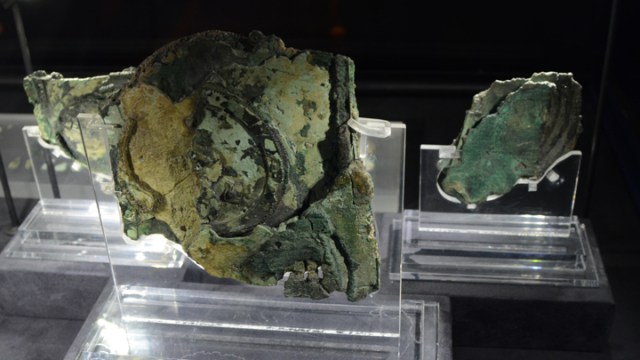How do black holes eat? Like Cookie Monster!
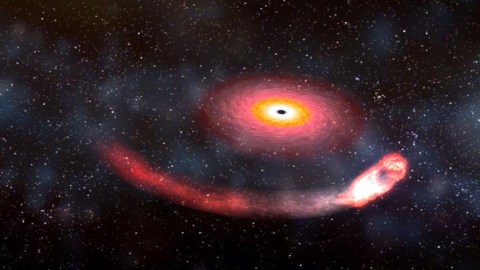
Om nom nom nom nom…
“That what wrong with the media today. All they have is questions, questions, questions. They never have cookies.” –Cookie Monster
When most people think of black holes, they think of these ultra-dense, cosmic monstrosities in space that eats anything that gets too close to them. Pictures and animations — even ones created by NASA itself — often show exactly this:
- an object approaches a black hole,
- the tidal forces tear it apart into streams,
- the black hole’s gravity attracts all of the stream-like matter,
- and then swallows it all, leaving no trace behind.
We all know about event horizons: the regions around black holes where gravity is so strong that not even light itself can escape. It’s why most of us think that black holes are the ultimate cosmic vacuum cleaners, devouring everything they encounter.
But this is perhaps the greatest cosmic misconception about black holes of all. While black holes do have event horizons, and while anything that crosses the event horizon can never get out, black holes eat more like Cookie Monster — the messiest of all eaters — than anything else. Consider that the two most common snacks for a black hole are either stars or gas clouds. A typical gas cloud in space is much larger than our Solar System is, with many spanning multiple light years in size, while a star that approaches a black hole will find itself spaghettified, or stretched into a long, thin strand aligned with the direction of the black hole. By time either of these options reach the event horizon of the black hole itself, they’re many, many times the size of the black hole’s event horizon.

If the Sun were to somehow convert itself immediately into a black hole, its event horizon would be a mere 3 kilometers in radius: smaller than not just a star or a planet, but even than the asteroid that wiped out the dinosaurs. Even the black hole at the center of our Milky Way, millions of times the mass of the Sun, would have the entirety of its event horizon fit within the orbit of Mercury around our Sun. Sure, if you fall into the black hole’s event horizon, which surely some of the matter will do, it adds to the black hole’s mass, making it larger. But if you miss the event horizon itself and simply approach near the black hole, you’re going to find yourself tremendously accelerated instead. You’ll heat up, emit high-energy light, and very likely find yourself accelerated into a jet coming out from around the black hole’s poles.
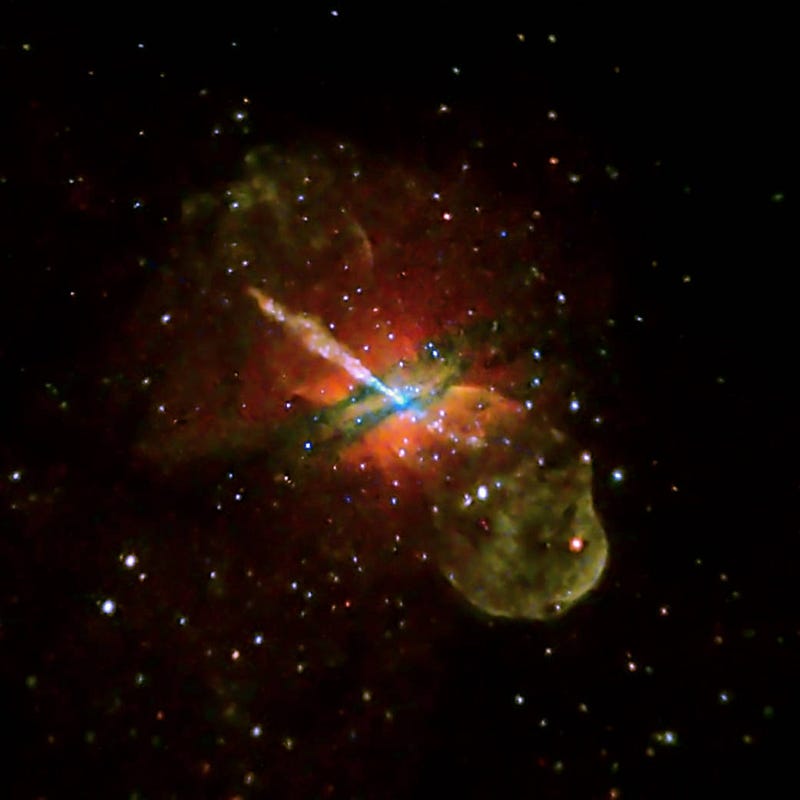
This might sound awfully theoretical, but we actually have an incredible amount of observational evidence to support this picture. Black holes within our own galaxy appear to turn on-and-off in fast, incredible bursts of high energy emission: microquasars. The black hole at the center of the Milky Way appears to flare up on occasion, emitting bursts of X-ray light due to passing, infalling, accelerating matter.

Supermassive black holes at the centers of other galaxies — many of which are thousands of times the mass of our own supermassive black hole — can be active, emitting tremendous amounts of energy due to their acceleration and emission of matter and energy in exactly this predictable fashion. We can often find evidence of this in many different wavelengths of light, including even visible signatures and jets in many instances.
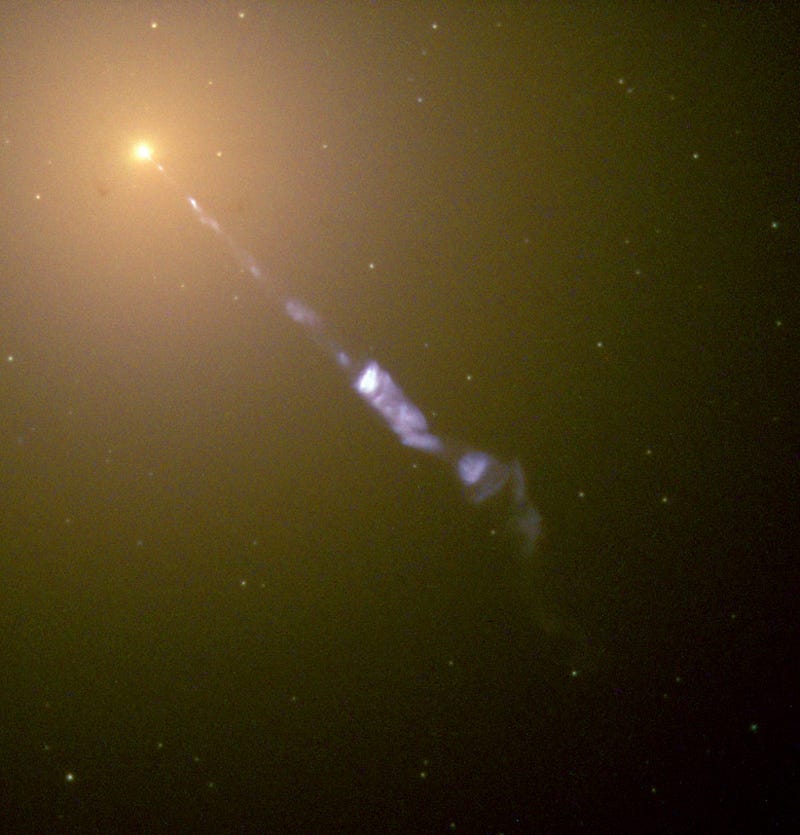
And most recently, we’ve learned that very cold molecular gas clouds can lead to a feast for black holes, with this cold “rain” falling onto them and causing the same emission patterns we’ve expected from hot, ionized gas. As scientist Grant Tremblay — co-discoverer of the most recent piece of evidence — said:
This very, very hot gas can quickly cool, condense, and precipitate in much the same way that warm, humid air in Earth’s atmosphere can spawn rain clouds and precipitation. The newly condensed clouds then rain in on the galaxy, fueling star formation and feeding its supermassive black hole.
But if we look at the mass of the infalling matter in detail, in all cases, most of it doesn’t go to feeding the supermassive black hole at all.
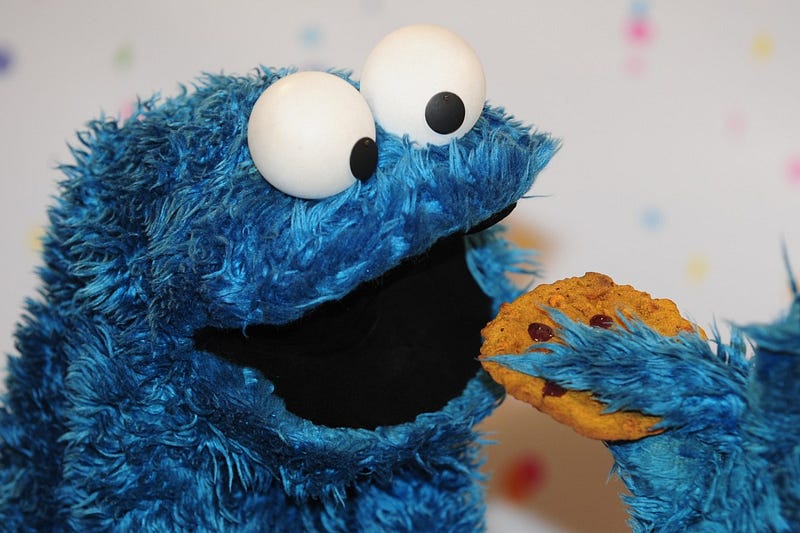
Instead, just like when Cookie Monster eats a cookie, only a tiny fraction actually makes it into the event horizon. Due to the intense gravitational forces and the tremendous size mismatch between the relatively tiny black holes and the large clumps of matter that feed them, the vast majority of infalling matter finds itself spit back out in an intense, violent flurry. It’s estimated that, contrary to the popular picture, upwards of 90% of infalling matter will never make it inside a black hole at all. Instead, it’s spewed back out into the outer regions of the galaxy, where it can fuel the formation of new stars and return to the interstellar medium once again.
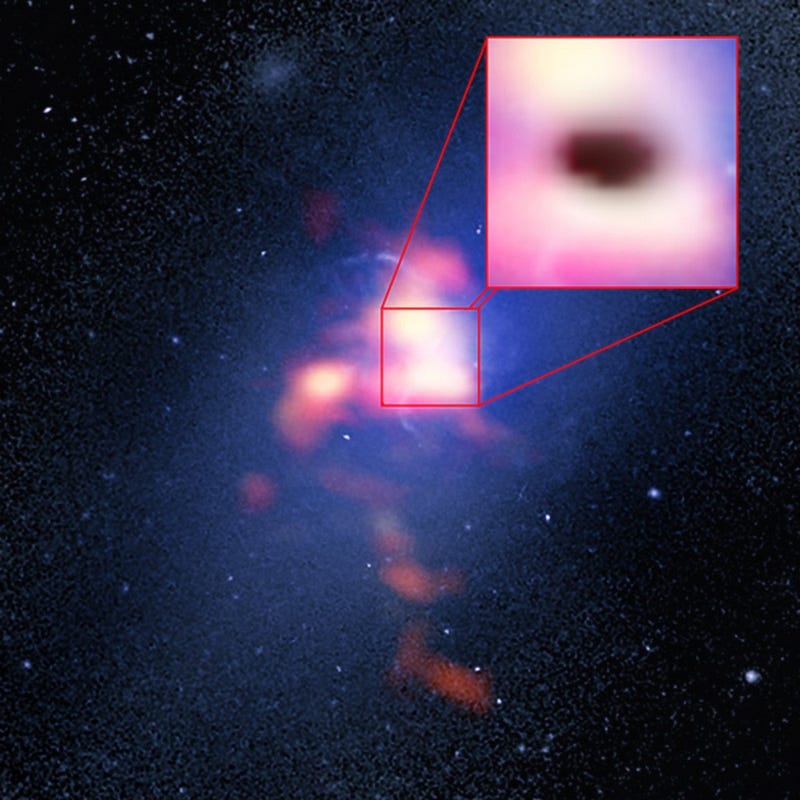
Contrary to the picture of them sucking everything near them in, black holes are some of the worst eaters in the Universe. If you’ve ever watched a child eat a quarter of their food and spill the rest on their faces, the table and the floor, cheer up! At least they’re doing much better than a black hole.
This post first appeared at Forbes, and is brought to you ad-free by our Patreon supporters. Comment on our forum, & buy our first book: Beyond The Galaxy!





